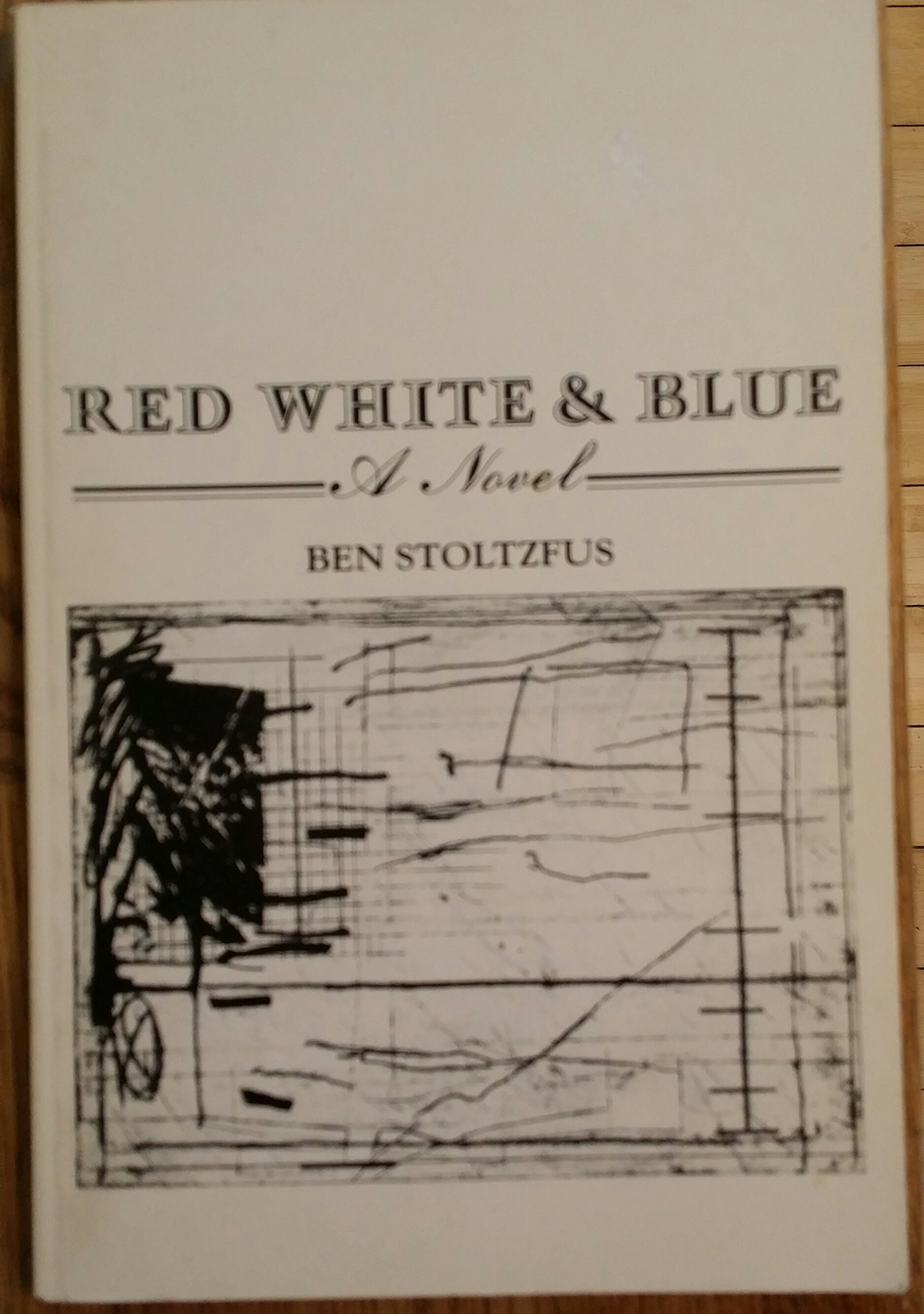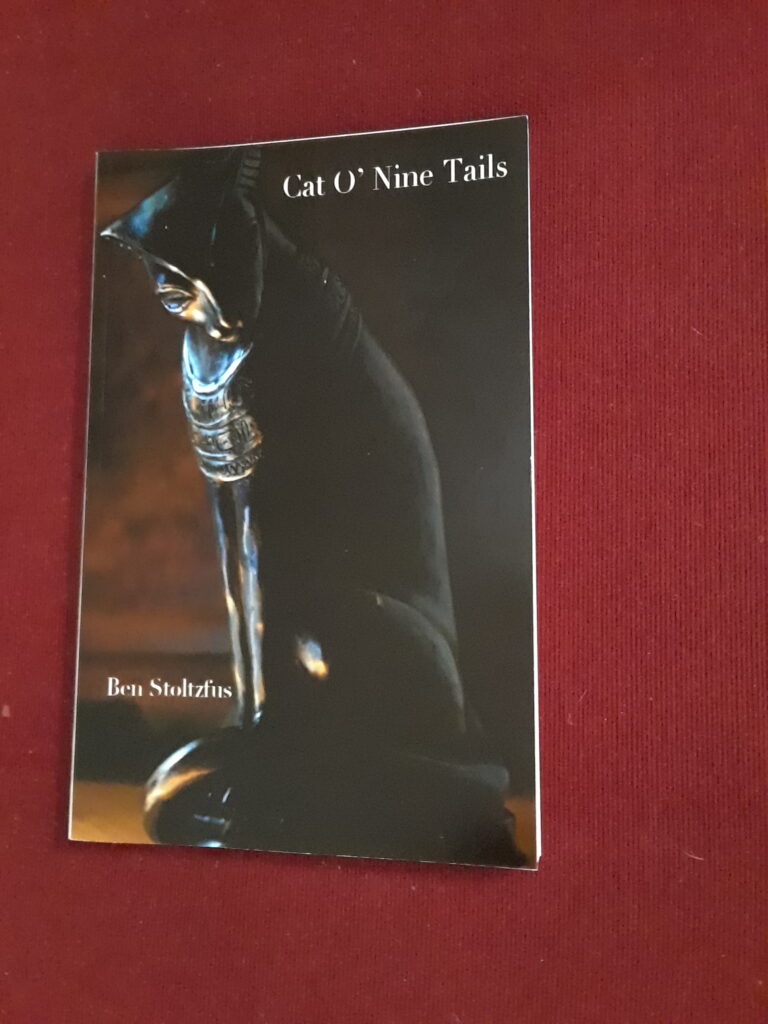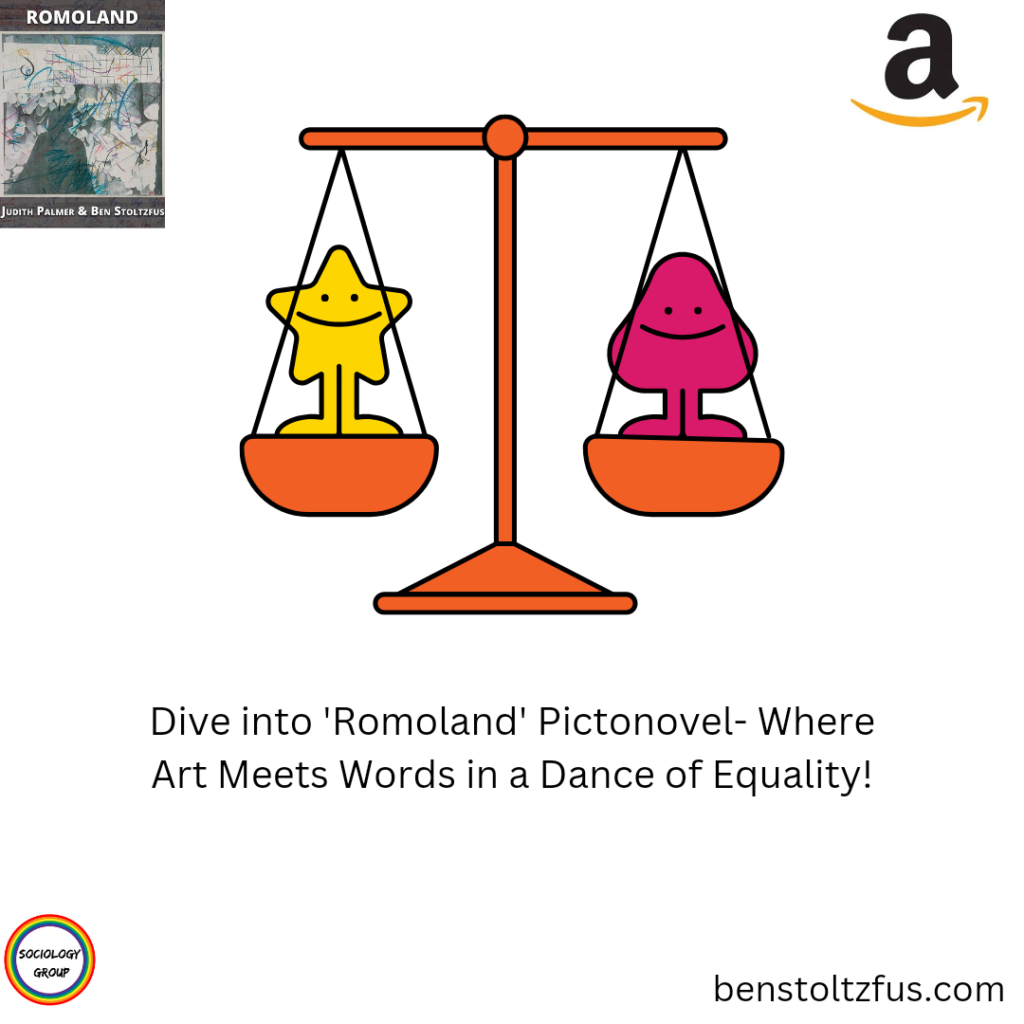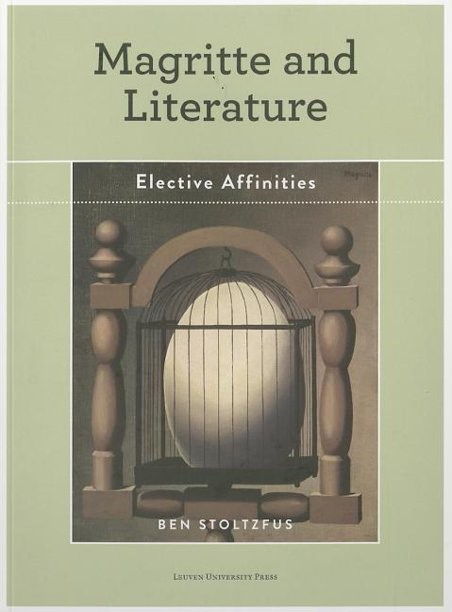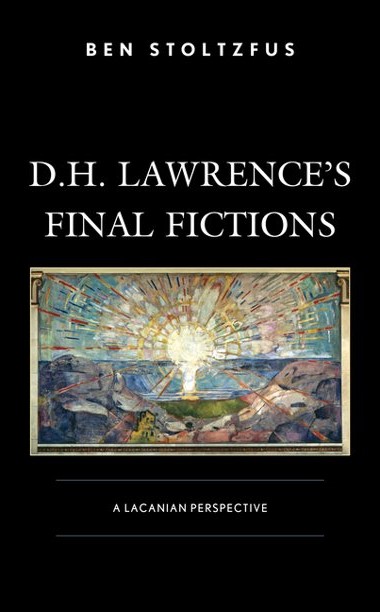BOOKS IN PRINT
The Nine Lives of BIG JP: A Metabiography is an unprecedented look into genuine partnership, how it is constituted and how it lasts. An authentic love story, a remarkable rendering of life in America during the twentieth century and beyond. It is a masterwork.
“It represents the extraordinary new genre of ‘metabiography’, which emerged from early twentieth-century modernism, evolved through postmodernism, and is now firmly established in the present. As metabiography, Big JP eschews boundaries by blending biography, memoir, travelogue, art criticism, and fictional narratives into a dynamic and original art form. The story of Judith Palmer unfolds a four-dimensional, kaleidoscopic vison of the sixty-year life story that Judith and Ben have woven together.” —Kumiko Hoshi, Professor of English Language and Culture, Aichi Gakuin University; author of D.H. Lawrence and Pre-Einsteinian Modernist Relativity (2018), and Quests for Corvo (2025).
“Ben Stoltzfus calls this book a ‘metabiography’ but the label shouldn’t hide that it invents a new genre, and is above all a prose poem to his artist wife, Judith. It is unique in its experimental deployment of several different modes of writing—memoir, fictional narrative, and picturesque depictions of landscape and seascape. But it is most of all a testament to an all too rare desire to know, understand and collaborate with her as a woman, wife and partner. Stoltzfus attends deeply to Judith’s perceptions, states of mind and emotional contours as he unfolds Judith’s own remembrances of her youth and younger adulthood, highlighting key moments and psychological breaks and breakthroughs in her life, as his own unforgettable renderings of them become a deeply poetic homage to her. Few people have sought to undertake to grasp the totality of another human being and even fewer have succeeded as fully as Stoltzfus has in this marvelous, gripping book, which demonstrates how the ‘impossible’ relation between the sexes can nevertheless establish itself to create something greater than the sum of its two parts. An amazing tour de force.” —Juliet Flower MacCannell, Professor Emerita, English and Comparative Literature, University of California, Irvine; author of Figuring Lacan (1986/ “Classic”: 2014); The Hysteric’s Guide to the Future Female Subject (2000).
“Ben Stoltzfus has written perceptively on metafiction. He offers a new informative and enthralling ‘metabiography.’ Through contextually amplified diaries, recast fiction, allusion, and direct narrative of Judith’s and Ben’s collaboration, this self-reflexive memoir, cast in multifaceted and resonant art forms, tells an intriguing love story of their encounters, their lives, and devotion to each other.” —Roch C. Smith, Professor Emeritus, French, The University of North Carolina, Greensboro; author of Gaston Bachelard (2016); Understanding Robbe-Grillet (2000).
Fiction
Red White & Blue. 1989. York Press. 122 pages. Available from the author. $6.98 plus $5.02 for shipping and handling in the US. (checks or cash) <bensto@sbcglobal.net>
Ian R. Stagg, ex-President, has been impeached for high crimes and misdemeanors. He is living in exile in Tierra del Fuego, and, in trying to vindicate himself, he describes the three institutions he founded while still in office. He tells a visiting journalist that they were designed to monitor the behavior of a populace that had run amok. The initials of his name and of the institutions (I.R.S.) generate the narrative. Early on President Stagg meets Laverne, a high-class Las Vegas hooker, who is also a subject for an experimental pill that will be both a contraceptive and an aphrodisiac. Meanwhile, the Mafia tries to muscle in on the pill’s anticipated profits. In protecting Lavarne, the President is run out of office for collusion, corruption, and conspiracy, the evils he himself had tried to eradicate.
In this parody of the whodunit genre, the President pieces together missing links of the past, reconstructs events in his imagination, finds the key to his downfall, and opens the door to the secret room where, not without humor, and with the complicity of the reader, he unveils the mystery: A skeleton, silver dollars, and a human slot machine are the props that give birth to insight in the delivery room of a Las Vegas casino that is also a theater of the unconscious. In playing with the unconscious, with reality, and with politics, Red White & Blue parodies the codes of the classical novel, censorship, and cliché, as well as an incipient national drift toward Fascism–a drift that always tries to justify itself by invoking God, law and order, and common sense.
Praise for Red, White & Blue:
“Red White & Blue is an open, adventurous, ludic text … an excellent ‘read,’ all that is most enjoyable in the postmodern enterprise.”
—Raylene Ramsay, New Novel Review
Valley of Roses. 2003. Trafford. To order, Google “Trafford” and click on “Bookstore.”
Valley of Roses is a four-part novel and fictional memoir based on the narrator’s flashbacks to a quasi-mythical country — a garden of innocence and plenty that has been or will be ravaged by war. Aaron, an American, reflects on the happiness of earlier, idyllic times, and he relives his love for Zhivka, his friendship with Dimcho, separation, and the subsequent Communist takeover of Bulgaria.
This is a novel about faith, politics, art and survival, and it is composed of events and reminiscences that paint an ongoing picture of joy, loss and retrieval. Bulgaria is famous for its attar of roses that is distilled from the petals. The art of this fiction is distilled from life, and its love story is distilled from the heart when German forces occupied the Balkans during WW II when the loves, lives and friendships of Americans and Bulgarians were altered irrevocably.
Praise for Valley of Roses
“At once striking and revelatory … Valley of Roses bursts forth in combination of poetic style, metaphoric profusion, and elegiac tone … a fine novel.”
—Erik Nakjavani, International Fiction Review
Cat O’Nine Tails. 2012. Neo Literati. 128 pages. Available from the author. $6.98 plus $5.02 for shipping and handling in the US. (checks or cash) <bensto@sbcglobal.net>
There are nine tales in this collection of short stories about cats and how cats and characters interact. Although ostensibly about felines, the stories are also playful postmodern explorations of language, the creative process, images, sounds, and cultural practices. The settings are international, and they range from California to New England, southern France, Istanbul, and Cuba. The settings are as diverse as the stories. “Chapeau” is a comic-erotic tale about a woman who thinks she is the reincarnation of the Egyptian cat goddess Bastet. “The Sign” explores the cruelty of boys–a cruelty mitigated by the linguistic weave and verbal play in which the story is embedded. “The Obelisk” examines one boy’s erotic awakening that is caught between cultural expectations of conformity and “foreign” temptations. Thoroughly engaging in its verbal play, Cat O’Nine Tails embraces the compelling eminence of American literary fiction.
Praise for Cat O’Nine Tails:
“Stoltzfus blends the traditional and metafictional tendencies so successfully that each of his stories can be read as a narration of fiction. Such narrative counterpoint makes Cat O’Nine Tails an exceptionally accessible work of post-modern short fiction.”
—Roch C. Smith, American Book Review
Dumpster, for God’s Sake. 2019. To order, Google “39 West Press” and click on “Books.”
Equal parts sociological lore and screwball comedy, Dumpster, for God’s Sake bends reality into fiction in a uniquely American exploration of the passions that make us human.
“Profoundly dystopian and completely believable.” −Dean MacCannell, author of The Tourist
Loviers City believes that cleanliness leads to Godliness. But order quickly descends into chaos when a sighting of the Virgin occurs. Soon, thousands arrive to visit the spot where She appeared. But the pilgrims leave their mark, discarding refuse and besmirching Loviers City’s All-America vision.
Suspense mounts as Rudy Squazza, the red-bearded ringleader of the homeless, and Jasmine, a rich teenager working on a high school project, fall in love. He is a dumpster diver and the victim of police brutality. She dresses in black leather, rides a red Ducati Supersport 750, and is known as the “Angel from Hell.”
With compelling prose, canny insight, and artful empathy, Ben Stoltzfus brilliantly examines group behavior in a timely tale of collective zeal and righteous intent that explores a city’s urgent quest for soul.
Praise for Dumpster, for God’s Sake:
“Winesburg, Ohio meets Day of the Locust meets White Noise meets reality TV in this satirical send-up of the year before the millennium in a smalltime American city. Stoltzfus starts with the outrageous—a city so devoted to waste disposal that it creates a flag with the colors of the garbage cans—and ups the grotesque ante from there. Crows are methodically infested with lice, a city-wide poetry contest delivers white supremacist doggerel, followed by a banal sort of neo-liberalism, followed by an exquisite corpse, while a crew of homeless people determine to live upwardly mobile even if that means taking over the local parks. At the poetry festival one character feels a glimmer of consciousness, and almost rises to action but that moment is swiftly forgotten as things devolve into chaos. Serial murders, mayhem, a sighting of the Virgin Mary (or is that two?), reflections on metafiction—what is and what is not—killer bees, multiple crow deaths, and one large motorcycle. At once a parody and a novel of ideas, Dumpster, for God’s Sake charms as it slowly horrifies, and then, despite everything, charms again.”
—Stephanie Barbé Hammer
Professor Emerita, UC Riverside
Author of Sex with Buildings, The Puppet Turners of Narrow Interior, and the novel Pretend Plumber
“Reading Dumpster is like taking a trip through a carnival funhouse. My advice: kick back and enjoy Ben Stoltzfus’s unique vision as he leads you through a world of bizarre events, dazzling imagery, and unpredictable conversations.”
—Carlos Cortés
Professor Emeritus, UC Riverside
Author of Rose Hill and Fourth Quarter
Falling and Other Stories. 2018. To order, Google “Anaphora Press,” click on “Contact,” click on “Short Stories,” click on “Ben Stoltzfus.”
A novella and six short fictions are by turn mythic and realistic, moving and wistful, innovative and traditional. They map a wide geography of human emotions: lust, adventure, love, alienation, explicit violence and implicit passion. Ben Stoltzfus makes each character—a glamour girl, a scuba queen, a shaman, a mountain climber, a skier, a ball-court superstar, women in distress, even strangers—come vividly alive. In “Falling” you, the narrator, climb toward the summit with Juan, your friend, following flashbacks in the narrative trail. In “The Bank”, a father and son come to terms with a lifetime of estrangement. In “Glamour Girl”, a woman reminisces about her husbands, rich people, Joe Louis and happy days in the spotlight. In “Scuba Queen”, two college friends, now women in their thirties, dive for abalone in the kelp beds of the Pacific Ocean where their rivalry begets a dangerous and miraculous denouement. “Masks and Bergamasks” is a love monologue, a silent conversation between a teacher and a student during a lecture on French Symbolist poetry. In “Samantha’s Choice”, three friends debate free will versus determinism, and are caught in an avalanche while skiing Mount Washington. In “The Games of Chichén Itzà”, a shaman dreams Mayan life and ritual into a dramatic ball-court encounter between two teams; the play of the gods is re-enacted as struggle, blood-sacrifice and renewal. Subtly honed with hallmark precision and keen insight, this wide-ranging collection exemplifies the best in narrative art.
Praise for Falling and Other Stories:
“The range of narrative styles and settings, both spatial and temporal, make these stories exceptionally intriguing and appealing. The variety of voices, male, female, young, old, contemporary, or past, is particularly remarkable and skillfully executed. Stoltzfus writes with evident knowledge—of flora, fauna, sport, literature, and, most importantly, human relationships—and a painterly attention to detail that fuse these tales into an assemblage that is bound to delight, engage, and even instruct the reader.” —Necessary Fiction, Roch C. Smith
“The literal ascents and descents mirror the breathless highs and lows of the characters, sometimes soaring and sometimes dropping like adult versions of Icarus in all his mythic complexity: passionate, willful, innocent, stubborn, adventurous, short-sighted. The momentum can be dizzying but the themes and images that appear and recur in the novella and the stories unite all of these disparate characters in their common humanity.” —Diane Goodman
Hybrid
Alliecats–53 Graphic Tales (with Allie Kirschner, the artist). 2019. To order, Google “39 West Press,” and click on “Books.”
Mississippi said to Missouri, “If I put on my New Jersey, what will Delaware?” Virginia replied, “Alaska.” This wordplay on states’ names as vestments resembles the play and ambiguity in Alliecats, a wonderful collection of fifty-three graphic tales that catenate (link) meaning, sound, and likeness into clever puns.
“Alliecats is an absolutely delightful book.” −Juliet Flower MacCannell, Professor Emerita, UC Irvine
Novelist and literary critic Ben Stoltzfus penned the introduction and assembled the words. His granddaughter (cater-cousin), Allie Kirschner, drew the pictures. You will purr with satisfaction as she romps with feline grace, caterwauling from catalog to Catalina, although not without an occasional cataclysm or catastrophe.
The purrposeful puns of Alliecats will amuse as you slide helplessly into a state of muscular rigidity, or catalepsy, while author and artist cater to your funny bone and make you laugh.
Praise for Alliecats:
“Alliecats is an absolutely delightful book—an amazing visual and verbal pleasure. Its whimsical cats illustrate the incredible number of English words that contain “cat” and should expand the vocabulary of anyone, young or old, who has the joy of reading this unique book. I believe it will become a classic, like the works of Dr. Seuss.”
—Juliet Flower MacCannell
Professor Emerita, UC Irvine
Author of The Hysteric’s Guide to the Future Female Subject
The Puma Drinks the New Moon. 70 Haiku by Ben Stoltzfus. Six photo-etchings of Baja cave paintings by Judith Palmer. Talent House Press, 2000. Available from the author. $5.98 pus $5.02 for shipping and handling in the US. (checks or cash)
<bensto@sbcglobal.net>
Romoland. 2016. To order, Google “39 West Press” and click on “Books.”
Romoland, a postmodern event conjoining feminist artist Judith Palmer and novelist Ben Stoltzfus, uses twenty-five art works as generative surfaces for a series of dialogues between a man and a woman.
The images and the text explore the historical subjection of women by men, their deliverance through art, and the dismantling of cultural codes. Both texts foreground the voice of the Other as it manifests itself in the traces, lines, and cracks of speech—be they visual or verbal.
The arabesques of the woman’s sensibilities oppose the squares of man’s authority. Her art speaks and his text sees. Together, they unveil another space between the pictures and the text—the body of bliss and equality—in a way that is ironic, comic, and playful.
Praise for Romoland:
Romoland’s “originality lies… in its gendered, multilayered, culturally allusive presentation of the compelling and complex encounter within and between picture and word.”
—Roch C. Smith, American Book Review
Professor Emeritus, French, UNC-Greensboro
“Romoland is an amazing collaboration between two artists: a woman and a man, a wife and a husband. The woman’s visual strategy, in conjunction with the man’s witty ‘ecofeminist’ text, plots the liberation of women, persistently and playfully.”
—Ai Ogasawara
Professor, American Studies, Kwansei Gakuin University, Japan
Monograph

Postmodern Poetics: Nouveau Roman and Innovative Fiction. 1987. 96 pages. Occasional Papers in Language, Literature & Linguistics. Series A, Number 35. ISSN 0889-6356. Available from the author. $4.98 plus $5.02 for shipping and handling in the US. (checks or cash)
<bensto@sbcglobal.net>
This study addresses the historical climate that has produced new forms of reflexive writing. It examines the response of today’s writers and artists to a desacralized and demythified world. Instead of fear and trembling, a malaise that has characterized much of twentieth-century writing, the works of postmodern authors display humor, spontaneity, and a fascination with ludic structures. The purpose of Postmodern Poetics is to give poetic license to linguistic and imaginative interplay.
Magritte and Literature: Elective Affinities. 2013. To order, click on “Leuven University Press,” click on “Catalogue,” under “Contents” click on “Fall 2013,” click on “Art & Theory” and scroll down to the title.
The Belgian surrealist artist René Magritte (1898–1967) is well known for his thought-provoking and witty images that challenge the observer’s preconditioned perceptions of reality.
Magritte and Literature examines some of the artist’s major paintings whose titles were influenced by and related to works of literature. Baudelaire’s The Flowers of Evil, Goethe’s Elective Affinities, and Poe’s The Domain of Arnheim are representative examples of Magritte’s interarts dialog with literary figures. Despite these convergences the titles subvert the images in his paintings. It is the two images together, the image in the painting and the image in the title, that express the aesthetics of Surrealism. It is sparked by the juxtaposition of unrelated objects. Magritte’s challenge to representation compares with metafiction’s challenge to classic realism, Les Chants de Maldoror for example. The intersecting space between art and writing, sometimes referred to as the iconotext, manifests itself whenever Magritte borrows a literary title for a painting. His strategy is to paint visible thought, and this reverse ekphrasis, the opposite of a rhetorical description of a painting, undermines the written text. When he succeeds, the effect is poetry.
This publication is GPRC-labeled (Guaranteed Peer-Reviewed Content).
D.H. Lawrence’s Final Fictions: A Lacanian Perspective. Rowman & Littlefield/Lexington Books, 2022. To order email <orders@rowman.com> or call 1-800-462-6420 ext. 3023.
D.H. Lawrence’s Final Fictions: A Lacanian Perspective shows how Lawrence and Lacan can change beliefs and practices, oppose the Anthropocene, and restore cosmic balance. Stoltzfus brings literature and psychoanalysis together in readings that are both aesthetic and epistemological. D.H. Lawrence’s Final Fictions: A Lacanian Perspective explores how literature thinks; more specifically, how the reading of fiction influences behavior. Lawrence writes passionately about our alienation from ourselves, from other people, and from the cosmos. He believes that we need to heed the voices of our unconscious, and he shows us how to meld body and mind so that, psychoanalytically speaking, Id and Ego can come together. In this endeavor there is a salient convergence between Lawrence’s writings and those of Jacques Lacan, the French psychoanalyst. In this book, Stoltzfus examines the poetics of seven major fictions that Lawrence wrote between 1925 and 1930, five productive years that are referred to as his fabulation period. In each of the book’s seven chapters, in tandem with Lacan’s writings, Stoltzfus analyzes seven major characters, four of whom move from alienation to the renewal of self and the cosmos. He argues that Lawrence’s fiction is simultaneously descriptive and prescriptive by showing us how to circumvent dysfunction. Stoltzfus brings literature and psychoanalysis together in readings that are both aesthetic and epistemological. They are recipes for curing the Anthropocene.
Gide’s Eagles. Southern Illinois UP, 1969. 185 pages. Available from the author. $5.98 plus $5.02 for shipping and handling in the US. (checks or cash)
<bensto@sbcglobal.net>
An ingenious metaphor provides the framework for this penetrating study of André Gide. To explore the “labyrinth of values” of this noted satirical novelist, Stoltzfus uses the Prometheus legend as a point of departure for the exploration of Gide’s works. The eagle which fed on Prometheus’ liver is Gide’s trope for those internal flaws and external obstacles that haunt or devour man, thus inhibiting the realization of his true potential. But while Hercules freed the hero who stole fire from the gods in order to give it to man, Gide’s hero need only stretch to break the chains of conformity or the strait jackets of the peremptory. An eagle can thus be cast aside by the efforts of the individual himself. With discerning erudition, Stoltzfus develops the thread that runs through Gide’s writings. Each book, from Les Cahiers d’André Walter (1891) to Thésée (1946), along with his voluminous Journal, is seen as revealing a moral and aesthetic effort to draw away from bondage or self-deception, from spiritual blindness, and from submission to authority. Gide aesthetic structures dialogs of opposing values.
The first chapter of the book is about Prometheus. Subsequent chapters analyze the moral blindness that links the protagonists of L’Immoraliste, La Porte étroite, La Symphonie pastorale, Oedipe, and Les Faux-Monnayeurs. The Protestant eagle that figured so prominently in Gide’s Journal during 1916 and 1917 is the cultivated voice of an earlier prehensile Calvinistic conscience. Gide’s correspondence with zealous friends who would convert him poses a moral and aesthetic confrontation with Catholicism. From Catholic eagles, the Nobel Prize laureate moves on to social eagles and to the sham, insincerity and counterfeit values of a complex society where eagles thrive in a climate of physical and moral absolutism.
Alain Robbe-Grillet: The Body of the Text. Fairley-Dickinson UP, 1985. 187 pages. Available from the author. $5.98 plus $5.02 shipping and handling in the US. (checks or cash)
<bensto@sbcglobal.net>
This is a thematic study of Robbe-Grillet’s novels and films from Les Gommes (1953) to Djinn (1981), and from L’Année dernière à Marienbad (1961) to La Belle captive (1983). The book situates Robbe-Grillet’s oeuvre within the aesthetics of the nouveau roman and la nouvelle vague in cinema, and contrasts it with the conventions of classical realism. The body of the text is a trope that connotes the corporeality of language, even as it denotes women captives. Each chapter focuses on a major theme in Robbe-Grillet’s work: generative cells, serial permutations, the aesthetics of revolt, sexuality, specular structures, topological modes, labyrinths, and ludic patterns.
The reflexivity, discontinuity, and achronology of Robbe-Grillet’s New Novel (from Les Gommes, 1953, to Dans le labyrinth, 1959) are echoed and multiplied by means of generative themes, generative numbers, paronomasia, and polysemy in the New New Novel, its sequel, beginning with La Maison de rendez-vous. Thus, numerical, geometric, carnal, and mnemonic forms generate the objectival dispersion within Souvenirs du triangle d’or. In film, the serial permutations of the twelve themes of L’Eden et après are compared with Schoenberg’s twelve-tone system. Their formal characteristics are contrasted with images that function on mythic, mimetic, and affective levels. These levels are analyzed within a Marxist context and a postmodern aesthetic. Brecht’s “alienation effect” contrasts with Lukás’s “historical realism” as much as Robbe-Grillet’s rhetoric belies Balzac’s realism. Also, Robbe-Grillet’s fictions have affinities with Sade’s staged eroticism and with Kafka’s and Borges’s labyrinths. Robbe-Grillet’s fascination with ludic structures relates his oeuvre to the ideas of play theorists such as Roger Caillois, Eugen Fink, and Kostas Axelos. Umberto Eco’s ideas concerning the “open work” repeatedly find concrete expression in Robbe-Grillet’s fictions. These themes are manifest throughout his novels and his films, thus revealing profound aesthetic affinities among all the arts–be they music, film, writing, or painting. His most innovative forms foreground the signifying system in order to call attention to its signifying characteristics. He is less interested in telling a story than in the story of telling. New New novelists have taken their cues from Picasso, Mondrian, and Magritte in order to expose the internal machinery of the creative process. The “pleasure of the text,” as Roland Barthes phrases it, comes not from consuming the work but from producing it.
This new formalism, however, is strangely at odds with the gore in Robbe-Grillet’s texts, even though it’s ironic. Lest we be seduced by the body of the text, there is a woman’s warning “cry” and blood. They are metaphors that catapult us out of formalism into the mythic realism of everyday life.
Hemingway and French Writers. Kent State UP, 2010. 185 pages. Available from the publisher.
A collection of essays tracing seven decades of literary interaction between Hemingway and notable French authors
In a 1946 Atlantic Monthly essay, Jean-Paul Sartre writes: “The greatest literary development in France between 1929 and 1939 was the discovery of Faulkner, Dos Passos, Hemingway, Caldwell, and Steinbeck.”
When Ernest Hemingway arrived in Paris in 1922, he was an unknown writer from America. The City of Light was where he learned his craft and gained legitimacy. Although much has been written about Hemingway’s apprentice years in Paris, little has been published about his literary convergences with French writers. In Hemingway and French Writers, Ben Stoltzfus illuminates the connections between Hemingway and the most important French intellectuals, such as Gustave Flaubert, Marcel Proust, André Gide, Jacques Lacan, Jean-Paul Sartre, Henry de Montherlant, André Malraux, and Albert Camus. A distinguished scholar of both French literature and Hemingway studies, Stoltzfus compares Hemingway’s major works in chronological order, from The Sun Also Rises to The Old Man and the Sea, with novels by French writers.
While it is widely known that France influenced Hemingway’s writing, Hemingway also had an immense impact on French writers. Over the years, American and French novelists enriched each other’s works with new styles and untried techniques. In this comparative analysis, Stoltzfus discusses the complexities of Hemingway’s craft, the controlled skill, narrative economy, and stylistic clarity that the French, drawn to his emphasis on action, labeled “le style américain.”

